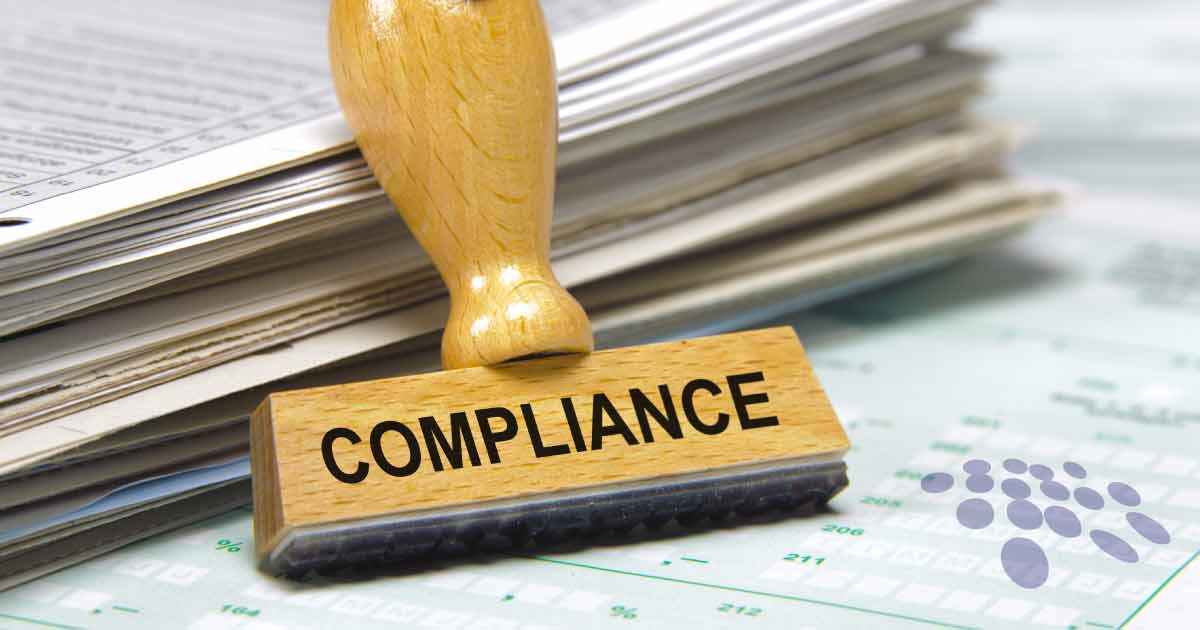Imagine your organization secured a major government contract after months of rigorous bidding and negotiation. The deal represents millions in revenue with strict timelines, milestones, and legal obligations tied to every clause. Yet, months into execution, compliance issues arise—deadlines are missed, reporting is inaccurate, and audit flags start piling up. The consequences? Cost overruns, strained relationships, potential penalties, and even risks to future contracting opportunities. This scenario highlights why contract compliance is not just bureaucratic red tape but a critical business function that safeguards value and reputation.
Understanding why contract compliance matters—and how to navigate its complexities—is vital for businesses across industries, especially those dealing with government procurement contracts where regulatory frameworks are stringent and unforgiving. This article unpacks the importance of contract compliance, clarifies its core concepts, and explores how organizations can manage compliance effectively, including within the specialized context of government contracts.
What is Contract Compliance?
At its core, contract compliance means ensuring all parties involved fulfill their contractual obligations as agreed. It extends beyond merely signing a contract; it is an ongoing discipline involving monitoring, managing, reporting, and verifying adherence to terms, conditions, performance metrics, deadlines, and payment schedules throughout the life of the agreement.
Contract compliance covers:
- Adherence to contractual terms: Ensuring deliverables, services, and performances meet the defined specifications.
- Observance of legal and regulatory requirements: Particularly important in government contracts, which often include complex mandates such as the Federal Acquisition Regulation (FAR).
- Timely reporting and documentation: Providing accurate data for audits, renewals, or dispute resolution.
- Risk mitigation: Identifying and addressing potential breaches or performance gaps early to avoid escalations.
Contract compliance is fundamentally a lifecycle management process that continues from contract creation through to fulfillment, renewal, or termination.
Why Contract Compliance is Critical Across Industries
Every sector benefits from strong compliance management—whether manufacturing, technology services, or public sector organizations. Noncompliance can result in:
- Financial penalties: Missing contract terms or regulatory requirements could lead to fines, withheld payments, or revenue loss.
- Legal risks: Breaches may escalate to litigation, contractual disputes, or regulatory enforcement actions.
- Operational disruptions: Inconsistent delivery or oversight can delay projects, lower service quality, or harm supplier relationships.
- Reputational damage: Publicly visible compliance failures, especially in government contracting, can harm brand credibility and future opportunities.
A 2023 survey by Deloitte reported that organizations with mature contract compliance processes reduce contract-related disputes by up to 30%, while enhancing revenue assurance and supplier performance. This insight reflects why mature contract compliance management is a strategic business advantage.
Understanding the Contract Compliance Process
The contract compliance process is a structured approach that enables organizations to monitor and ensure contractual obligations are met. While specifics vary by industry and contract type, a typical contract compliance process involves:
Contract Review and Risk Assessment
Before formalizing agreements, contracts are reviewed for compliance risks, regulatory mandates, and internal policy alignment. This phase includes mapping obligations, milestones, and reporting requirements.
Obligation Identification and Tracking
Key terms like deliverables, payment schedules, penalties, and regulatory clauses are extracted and tracked throughout execution.
Performance Monitoring and Reporting
Continuous evaluation of whether parties meet their obligations against agreed KPIs or SLAs, accompanied by regular reporting to stakeholders.
Communication and Issue Resolution
Proactive engagement to resolve compliance issues before they escalate to disputes or penalties.
Audit Preparation and Response
Organizing documentation and evidence required for internal or external audits, especially critical in government contracting.
Renewal, Amendment, or Closure
Final compliance checks before contract renewal or closure, often requiring formal validation and lessons learned.
These phases create a lifecycle that reinforces ongoing compliance rather than a one-time check.
Learn more about the broader contract compliance process here.
What Makes Government Procurement Contracts Unique?
Government procurement contracts bring specialized compliance challenges unlike typical commercial agreements due to:
- Strict regulatory frameworks: U.S. government contracts must comply with the Federal Acquisition Regulation (FAR) and related policies, imposing detailed requirements on ethical standards, reporting transparency, subcontracting, labor conditions, and more.
- Audit and reporting rigor: Government contracts require comprehensive documentation and periodic audits from agencies or third parties to ensure compliance.
- Complex approval workflows: Multi-level reviews, certifications, and sign-offs are common.
- Greater risk of sanctions: Noncompliance can lead to fines, contract termination, suspension from future government work, or criminal penalties.
- Vendor diversity mandates: Requirements such as Minority-Owned Business Enterprise (MBE) participation or environmental compliance add layers to contract terms.
Failure to align with these compliance requirements not only risks financial loss but imperils the ability to secure government partnerships moving forward.
How CLM Supports Government Contract Compliance
CLMs are designed to address the specialized needs of government procurement through:
- Automated obligation extraction and tracking: AI identifies FAR clauses, regulatory mandates, and contract terms for continuous monitoring.
- Centralized repository and audit trails: Secure storage of contracts and documentation with version control simplifies audit readiness and transparency.
- Compliance reporting and alerting: Real-time dashboards and configurable alerts highlight potential compliance risks before they escalate.
- Governance workflows: Role-based access, task assignments, and approval chains mirror government procurement processes, facilitating smoother collaboration.
- Integration capabilities: Seamlessly connects with ERP systems like SAP and procurement platforms to maintain accurate, up-to-date contract-related data.
These features ensure a scalable, repeatable compliance process that meets both universal contract obligations and the rigorous demands of government procurement.
Common Challenges in Contract Compliance and How to Overcome Them
Despite its importance, organizations often struggle with:
- Data silos and manual processes: Fragmented systems cause lost obligations and delayed risk identification.
- Complexity of contract terms: Ambiguous clauses or varied language lead to inconsistent interpretations.
- Regulatory knowledge gaps: Difficulty in tracking evolving government mandates without automated assistance.
- Inadequate monitoring and reporting tools: Limited visibility into performance impacts timely intervention.
- Resource limitations: Teams may lack expertise or bandwidth for proactive compliance management.
Addressing these challenges involves adopting a well-defined contract compliance process supported by technology that automates data extraction, provides continuous monitoring, and facilitates governance.
Key Performance Indicators (KPIs) for Measuring Contract Compliance
Tracking compliance success requires clear metrics such as:
- Percentage of contracts reviewed and approved for compliance before execution
- On-time delivery of contractual milestones or services
- Number of compliance breaches or audit findings per period
- Timeliness and accuracy of compliance reporting
- Resolution time for compliance-related issues
- Cost savings or penalties avoided due to compliance activities
Measuring these KPIs helps organizations not only detect compliance gaps early but also demonstrate accountability to stakeholders, including government agencies.
Practical Steps to Begin Improving Contract Compliance Today
Even organizations new to formalized compliance can begin by:
- Conducting a contract compliance risk assessment to identify high-risk agreements
- Documenting key contract obligations, deadlines, and reporting requirements centrally
- Defining clear roles and responsibilities for contract owners and compliance monitors
- Establishing regular status check-ins and reporting cadences
- Leveraging contract management software with AI capabilities for capturing, tracking, and alerting on compliance data
- Preparing audit-ready documentation and standardized workflows in advance
These foundational steps reduce the risk of missed obligations and build a culture of proactive compliance.
Frequently Asked Questions
What are the main legal risks of contract noncompliance?
Legal risks include breach of contract claims, regulatory fines, termination of contracts, and reputational harm that may affect future business opportunities.
How often should organizations audit their contracts for compliance?
Audit frequency varies by contract complexity and risk. Government contracts typically require regular audits aligned with agency schedules, while commercial contracts may need periodic internal reviews.
What does FAR compliance mean in government contracts?
FAR (Federal Acquisition Regulation) compliance means adhering to rules governing procurement processes, contract terms, reporting, ethics, and more established by the U.S. federal government.
Can contract compliance help improve vendor relationships?
Yes, by ensuring clarity, accountability, and transparency, compliance processes facilitate trust and performance alignment with vendors.
What role does technology play in managing contract compliance?
Technology automates obligation extraction, monitoring, reporting, and alerts, reducing manual errors and enabling scalable compliance programs.
How can small businesses manage contract compliance with limited resources?
Small businesses can start with clear documentation, defined roles, regular reviews, and invest in affordable contract management solutions to automate key processes.





Be First to Comment